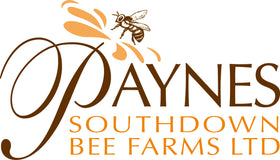Our poly hive
In 2011 Paynes released in the UK the original 6 frame polystyrene nuc hive. Although poly had been used for beehives before in other parts of Europe, this was the first time poly became available to the mass market for UK beekeepers. This release followed many years of research by ourselves in our own apiaries, trialing nuc boxes of various sizes and materials, ranging from small 3 frame nuc boxes to 8 frame nuc boxes. We found the 6 frame nuc was a perfect size and enabled beekeepers to make smaller 2/3 frame nucs or larger 4/5 frame splits without affecting the growth of the bee colony. The initial tests used the plywood boxes but we know we wanted to use polystyrene as the material for it's insulation properties. Although there were tiny queen mating hives of similar material, there was nothing else out there and we were had to find a manufacturer of poly who could make our custom product. Almost a further year of planning and development, with meetings at factories and conference calls, we had our first prototype. It was exciting times but honestly, a bit scary too. This was taking a huge risk and investment into the unknown for us. So we developed the nuc for our own needs for a solution to split, transport and overwinter colonies, knowing that we would use them even if no-one else did. However, after doing a pre-order on the website for the poly nuc, it became a huge success, selling our expected yearly sales in the first 24hrs.
In 2014, following on from the success of the poly nuc, we introduced a range of additional extension boxes for it. This meant that the poly nuc could now be used in other ways and used much more like a conventional hive, with honey supers.
Since then the poly nuc remains our best selling item, even after all these years and even with more competition on the market now. The original Paynes Poly Nuc still stands the test of time.
In 2015 The paynes poly hive was released. A full size 'national' sized hive giving the bees the same same benefits as the poly nuc but in it's traditional shape. This followed many months of planning and designing to ensure it met everyones expectations and requirements. We knew it had to be one piece moulded so there was minimal assembly for the user and no weak joints. We knew it had to be compatible with existing wooden hive parts that the user may already have. Again, we were wanting to use these ourselves in our own apiary setups but didn't want to waste the 1000s of wooden supers we already had. Our range of poly hives wasn't the first on the market, as some countries generally only use poly hives now, but it was certainly the first to reach the UK mainstream market.
